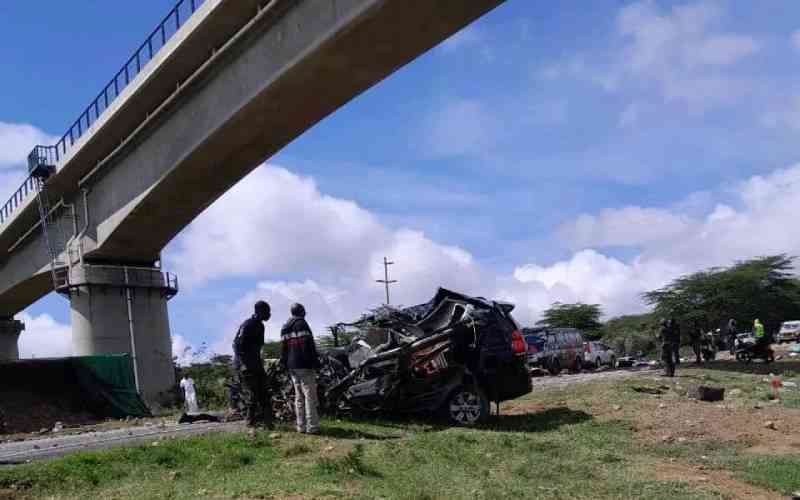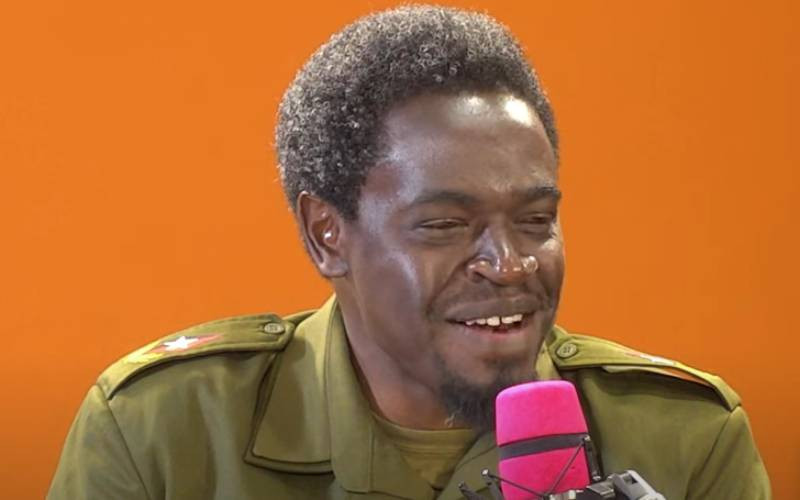If you stand near the tallest tree in Ogwedhi centre and look east, there is a wide space of uninhabited land before you see lush fields and rolling hills of Maasailand in the distance. And if you were that tree, then you would be the keeper of many historical secrets between the Maasai of Narok County and the Luo of Migori County, some violent, some even comical, others cordial. The empty space of unoccupied land between the two villages of Kikaat (Kilgoris constituency) and Ogwedhi (Suna-East constituency) represents the cautious handshake which the two communities offer to each other through inter-ethnic marriages.
‘Ogwedhi’ is the Luo term for ‘the blessed place,’ so named by the Josuna clan of the Luo people who first settled there before colonial days.
“We hear it was a place of abundance,” says Agustinus Nyamor Ochieng, “and everything was in excess. The soil is very fertile to date. Suna people brought cereals for barter trade, and the Maasai arrived with milk and meat.”
The old man recalls an incident in 1976, as the Maasai and the Luo met under a huge tido tree in Ogwedhi market and exchanged their wares. A lizard fell from the branch of the tree and got lost inside the dress of a Maasai woman. The woman then screamed, leapt in the air, and that was how the Maasai men waiting nearby attacked the nearest Luo. War erupted immediately, and the peaceful market day ended unceremoniously. Everyone still remembers that Mzee Otenga from Kano died that day.
Born in 1975, Pastor Benson ole Santian of neighbouring Kikaat village says his father told him it was an unnecessary fight.
“He told me it was indeed the lizard that began the fight,” he says. “The Maasai men thought a Luo had attacked their woman.” He thinks the Maasai habit of walking with weapons worsened the situation. “My father told me the Maasai were only eager for an opportunity to put their weapons to use. ”Yet if there is a single occurrence in Ogwedhi which resulted in numerous deaths, then it hides behind the name ‘Aora Remo’ (Dholuo) and ‘Oreiyet Lo Osargei’ (Maasai), for ‘Blood River’.
Mara
Born in 1910, Nyamor with his wife, Lucia, settled in Ogwedhi from Nyakach in 1963. Lucia recalls, “It was bush from one end to the other. We used to see elephants in those fields when we came.” She says these animals later receded into the Mara around 1973, the year of the last Luo exodus which poured in from Tanzania.
Nyamor explains that, right from the start, bad blood existed between the Maasai and the Luo. Noting that this is no longer the case, he feels the problem may have hindered inter-ethnic marriage between the two communities.
“Our neighbours used to make us laugh,” he remembers with a bemused smile. “You would be tending your cattle out there in the field. And then a group of Maasai would simply walk and start driving away your herd in broad daylight! It was like a dream.”
Ole Santian says he heard from his father how before the colonial days, a group of Luo gathered near the small river which runs between the two communities to fish one afternoon. However, the Maasai morans thought they were cattle thieves buying time to steal cattle under the cover of darkness. When evening came, and as the fishermen gathered their catch, they were suddenly surrounded, and not a single one escaped. It was such a bloodbath that to this day, one huge rock called ‘Lwanda Ojusa’ (Ojusa’s rock) acquired its name from the lead fisherman who perished there.
In 2009, a Maasai called ‘Ndome’ was waylaid and murdered on the Luo side of the border, in a love triangle involving a Luo widow. “People fought bitterly,” says Ole Santian. “Orwa Ojode brought GSU to stop the war. There has not been another war.”
But the Luo and Maasai of Ogwedhi still inter-marry in spite of their burden of history. Landless Luo also lease maize farms in Maasailand, but their hosts are careful not to let them stay beyond three years. Ole Santian says they have heard that the 2010 Constitution allows someone who has for five years lived on another’s piece of land to claim ownership.
“When we arrived in 1963,” says Mama Lucia, “there were Luo women from Kadem, Kanyamkago, Kamagambo, and Sakwa married to the Maasai across the border. Here in our village, our daughters-in-law live and bear several children. They even speak Dholuo better than I do,” she jokes.
Stay informed. Subscribe to our newsletter
 The Standard Group Plc is a
multi-media organization with investments in media platforms spanning newspaper
print operations, television, radio broadcasting, digital and online services. The
Standard Group is recognized as a leading multi-media house in Kenya with a key
influence in matters of national and international interest.
The Standard Group Plc is a
multi-media organization with investments in media platforms spanning newspaper
print operations, television, radio broadcasting, digital and online services. The
Standard Group is recognized as a leading multi-media house in Kenya with a key
influence in matters of national and international interest.
 The Standard Group Plc is a
multi-media organization with investments in media platforms spanning newspaper
print operations, television, radio broadcasting, digital and online services. The
Standard Group is recognized as a leading multi-media house in Kenya with a key
influence in matters of national and international interest.
The Standard Group Plc is a
multi-media organization with investments in media platforms spanning newspaper
print operations, television, radio broadcasting, digital and online services. The
Standard Group is recognized as a leading multi-media house in Kenya with a key
influence in matters of national and international interest.







